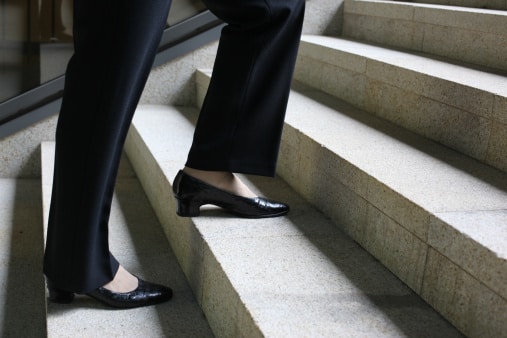
What goes up must come down. But when it comes to stairs, what comes down often winds up falling. Falls on stairs happen all the time, but they are much more common when descending a staircase than when climbing one. While the pull of gravity is undoubtedly a factor in falls while going down stairs, the mechanics of how we walk on stairs play an outsized role in such slip and fall accidents. Fortunately, many if not most of these incidents can be prevented with stair treads that increase traction and reduce the chances of slipping.
Falls Down Stairs Are The Second Leading Cause Of Accidental Injuries
According to a 2017 study published in the American Journal of Emergency Medicine, approximately 1.1 million Americans are treated in emergency rooms for stair-related injuries every year. This makes staircase and stairway accidents the second leading cause of accidental injury, second only to motor vehicle accidents. Sprains and strains (32.3%), soft tissue injuries (23.8%), and fractures (19.3%) were the most common types of stair-related fall injuries.
Overstepping
While there are plenty of reasons why someone may fall while descending stairs – poor lighting, broken stairs, lack of handrails, etc. – the two primary causes are overstepping and slipping.
Overstepping occurs when we can’t clearly identify the front of the tread and wind up stepping into the open space in front of the stair. Falls caused by overstepping are more common on stairs with shallow stair treads. On such steps, the foot is forced well forward on the tread. In stairways with dim lighting or where the treads are all painted the same color, it can be extremely easy to miscalculate and place your foot into open space in front of the next tread and fall forward. Injuries from this type of fall are often severe, including permanent injuries or death.
Slipping
Almost all non-disabled individuals descend stairs the same way, with the foot well-forward on the tread, the ball of the foot striking right at the front edge of the tread, and the toes hanging over the edge. Walking on the front edge of a stair is so common that the treads often are highly worn, with paint chipped away, threadbare carpeting, or a surface that is extremely smooth with no traction at all. Add water, snow, ice, oil, and other substances to the mix, and you have a recipe for disaster.
How To Prevent Overstepping and Slipping on Stairs
At Eagle Mat and Floor Products, we have several high-quality products specifically designed to reduce falls on stairs caused by slipping or overstepping.
Stair treads increase traction, channel away dirt and water, and make every step safer. These include:
- Heavy-duty rubber stair treads that are pre-sanded for easy installation, made from sustainable materials, and come in 10 different colors.
- Vinyl stair treads are very durable, have an extra massive front edge to resist wear, and come in four colors.
- Extruded aluminum stair treads are especially useful if you have a worn-out stairway that you can’t afford to replace just yet. Aluminum treads will cover and make up for a multitude of stairway sins.
Step Up Your Stair Safety: Contact Eagle Mat and Floor Products Today
Eagle Mat and Floor Products proudly offers the finest in commercial mats and floor covering products in the marketplace. Our products are designed to provide safety, durability, and functionality in all types of environments.
If you want to protect your guests and employees from serious falls on your stairs, contact us today at 1-877-333-1018 to speak with a member of our knowledgeable sales team.






